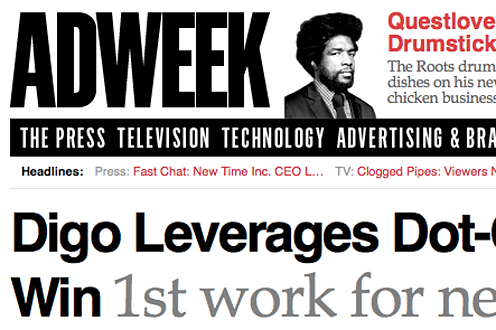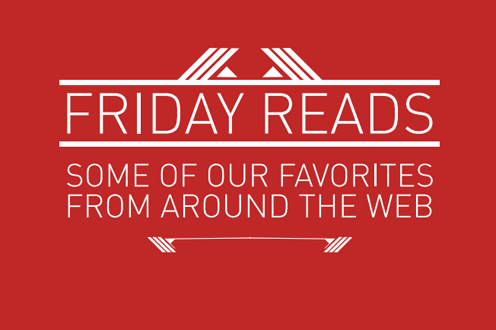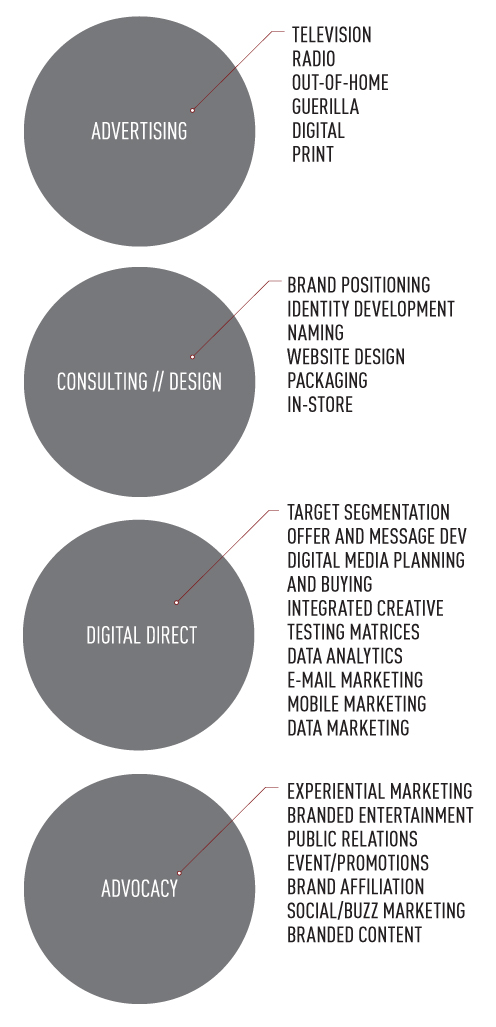By
Team DIGO | 12/28/2011 | in

Marketing genius Seth Godin founded Squidoo. This in itself is not a guarantee of success. Godin has founded many things, and quite a few of them didn’t work out, as he will freely admit in his own bio.
I’d bet on Squidoo. It has more than the spark that Godin brings to everything he does. It operates as the intersection of several trends that put together a compelling engagement model that is also a likely business model. This is rare.
On Squidoo, people put up their own “lenses.” A lens is basically a web page or site, that is the owner’s view of a situation.
You could do a lens about your love of a certain breed of dog. Or you could do one about a kind of chili you live. A recent “Lens of the week” winner was about a man’s childhood memories from the 1940.
Anyone can put up and maintain as many lenses as they want. In this sense, Squidoo is not unlike WordPress, Flickr and other similar sites. But, there’s an added incentive and focus for Squidoo lenses – money.
When there’s interaction and advertising revenue from your Squidoo lenses, Squidoo splits that revenue between Squidoo, charity and you.
People who play the game well can make some real money.
All of us can learn from the thinking that went into Squidoo.
By
Team DIGO | 12/13/2011 | in

Professor BJ Fogg, founder of the Persuasive Technology Lab at Stanford University, discovered a relatively simple principle for making every interaction more persuasive. I’ve further simplified (without oversimplifying) it here. You can apply this to everything you touch to make it more persuasive and effective.
What Dr. Fogg discovered in his research is that three factors impact the persuasiveness of virtually anything. The first is motivation – as in how motivated is the person. The second is ease – as in how easy is it to take the required action. And the third is time – is there a trigger at the intersection of the peak of motivation and ease?
It comes down to this. High motivation plus easy to do at exactly the same time = the action that leads to persuasion.
Here’s a key you can apply to un-sticking the potential for persuasion in literally everything you touch. Ask:
- Is this as compelling as it can be? Have we captured and whipped up the motivation of the audience?
- Have we made this as easy as it can be to do?
- Will the audience experience both the motivation and the ease at exactly the same time? (trigger)
This is part of our system for accelerating brand-driven growth® at DIGO. Find resources and tools to get even more persuasion and growth from this insight here.
By
Team DIGO | 12/12/2011 | in

Nothing speeds things up by solving multiple problems at once like a BIG idea. Here’s how to get more of them.
BIG ideas are different. They don’t so much defy logic, as go beyond it. They challenge the illusion of costless compromise. If you are competing with, or trying to reinvigorate a large organization, you need to be able to green light the big idea.
So, what is a big idea? What does it look like before it becomes a big idea? How can you recognize an opportunity to turn a pragmatic necessity into a big idea? What does it feel like to face a decision on whether or not to green-light one? And how do you know your decision was the right one?
Here are some general principles to help you on your journey to answer these questions in action:
Howard Schultz certainly made his share of Big Idea decisions while building Starbucks from a tiny company into one of the worlds largest retailers. Called back to the CEO role after an eight year working hiatus as Chairman, Schulz turned to the Big Idea again to help affect a massive transformation of the coffee giant. Schultz begins his book on the turnaround, Onward, with this story of green-lighting a Big Idea.
“One Tuesday afternoon in February 2008, Starbucks closed all of its US stores.
A note posted on 7,100 locked doors explained the reason:
“We’re taking time to perfect our espresso.
Great espresso requires practice.
That’s why we’re dedicating ourselves to honing our craft.”
Schultz tells the story of how he came to this costly, risky and unprecedented decision to close all of Starbucks stores simultaneously for training. I quote at length because this story so perfectly explicates the many facets of green-lighting a big idea.
“One team [at Starbucks] had to figure out how we could, in short order, re-train 135,000 baristas to pour the perfect shot of espresso.(1) Pouring espresso is an art, one that requires the barista to care about the quality of the beverage.(2) If the barista only goes through the motions, if he or she does not care and produces an inferior espresso that is too weak or too bitter, then Starbucks has lost the essence of what we set out to do 40 years ago: inspire the human spirit.(3) I realize this is a lofty mission for a cup of coffee, but this is what merchants do. We take the ordinary – a shoe, a knife – and give it new life, believing that what we create has the potential to touch other’s lives because it touched ours.(4)
Starbucks has always been about so much more than coffee. But without great coffee, we have no reason to exist.
“We looked at all the options,” the team seated around me said. “The only way to retrain everyone by March is to close our stores, all at once.”(5)
I sat back in my chair. It would be a powerful statement, but no retailer had ever done such a thing. (6) “That’s a big idea,” I replied, considering the risks. (7) Starbucks would lose several million dollars in sales and labor costs. That would be unavoidable. Competitors would capitalize on our absence and try to lure away our customers. Critics would gloat, cynics would smirk, and the always-unpredictable media scrutiny could be humiliating. On Wall Street, our stock could sink even lower. Most dangerous of all, such a massive retraining event would be perceived as our own admission that Starbucks was no longer good enough. But if I was honest with myself, I knew that was the truth.(8)
I pursed my lips and looked at the team. “Let’s do it.”(9)
1) The Big Idea comes out of a very real problem and a pragmatic need. In this case it was ill-trained baristas and the need to re-train them quickly that led to the big idea, which I’ll tell you more about shortly. But for now, remember this — the big idea rises out of the core realities of the business.
2) There is a core product, and it’s quality matters. In fact, the delivery of this product is an art. Being the authority on this is core to Starbucks reason to exist, and Schultz knows it.
3) Starbucks has a mission, which informs its decisions – to inspire the human spirit. In Schultz’s deeply held belief system, a well-poured cup of coffee can do that, but a carelessly poured cup cannot.
4) Schultz understands as few leaders do that what great merchants – read brand builders – can do is raise the mundane to the level of the sublime. Or as Schultz says, “…we take the ordinary…and give it new life…”
5) The big idea often comes out of something that at first seems a necessary evil, especially from situations in which the veil of corporate propriety must be lifted and uncomfortable truths exposed.
6) Though he had asked for a training solution, he immediate evaluated the proposal as a branding statement, a leadership and public relations event.
7) He literally says, “That’s a BIG Idea.” In the same breath, he acknowledges the outsized risk. This is not a coincidence. The very thing that makes this feels like a great risk – an unprecedented degree of openness about a core failing/commitment – is what makes this a big idea.
8) What can your brand be radically truthful about? What would you honestly and openly confront in spite of all costs?
9) Only a leader can green light a big idea. This is the reason they are so rare and so effective. Often, this happens in lonely moments when a leader is overcome by a cocktail of love and commitment to the brand. And it’s a beautiful thing. I’ll give Howard Schultz the last word here – he’s earned it!
There are moments in our lives when we summon the courage to make choices that go against reason, against common sense and the wise counsel of people we trust. But we lean forward nonetheless because, despite all risks and rational argument, we believe that the path we are choosing is the right and best thing to do. We refuse to be bystanders, even if we do not know exactly where our actions will lead.
Ultimately, closing our stores was most powerful in it’s symbolism. It was a galvanizing even to Starbucks’ partners – the term we use for our employees – a stake in the ground that helped reestablish some of the emotional attachment and trust we had squandered during our years of focusing on hyper-growth. A bold move that I stand by today, it sent a message that decisiveness was back at Starbucks.
One thing I’ve noticed is that leaders of growing organizations tend to green light more BIG ideas. And they tend to do so for the very reason that the ideas are BIG. In fact, a big idea orientation appears to be an essential of those leaders who would outgrow the competition.
By
Team DIGO | 11/27/2011 | in
The old style divisions between paid and unpaid media, above and below the line, and seemingly infinite silos all end here. Everything we do is “advertising.” We make businesses and brands grow, and we drive the conversation that drives people to our clients’ worlds. Advertising. We love it.
By
Team DIGO | 11/27/2011 | in
Throughout our 15-year history, and for ages before the word became a cliché, we’ve been noted for our ability to create “buzz,” or extended excitement, presence and word-of-mouth regarding a product or brand. This is the kind of advertising you don’t pay for: it’s based on people’s inherent need to share information because doing so makes them feel validated, inspired and unified.
Certain people naturally function as brand advocates, and our job is to inspire and guide these “influentials.” At DIGO, this responsibility doesn’t fall to one department or specialty—it’s a company-wide mission that will be the goal of everyone on your team.
DIGO’s buzz and social marketing services include:
- Social Marketing Audit
- Social Marketing Kick Start
- Social Media Planning
- Social Media Integration
- Social World Mapping
- Brand Buzz Monitoring
- Metrics & Analytics
- Content Creation
- Multiplatform Technology & Development








